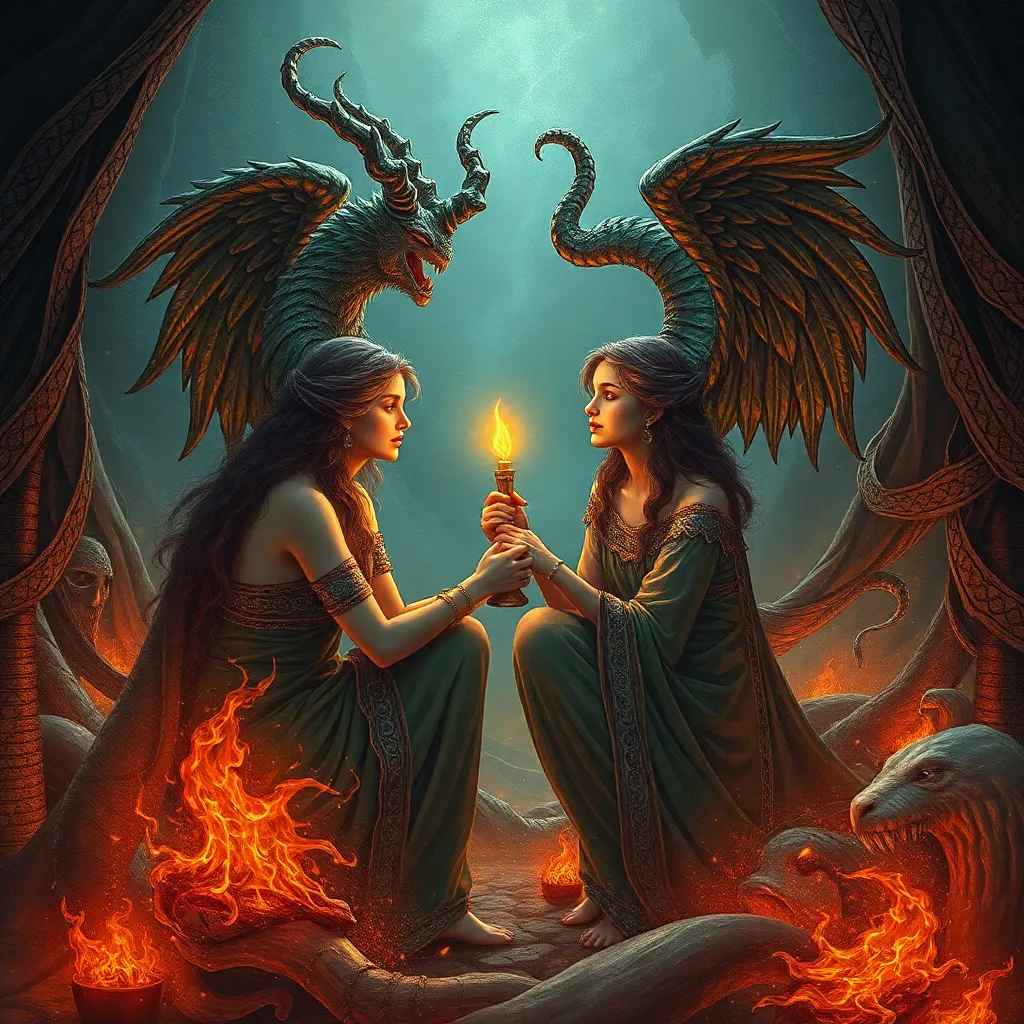Lamia’s Temptation: Analyzing the Moral and Psychological Themes in Her Tales
I. Introduction
Lamia is a captivating figure in mythology and literature, often depicted as a seductive monster with a tragic backstory. Her tales have resonated through the ages, reflecting deep-seated fears and desires within the human psyche. This article delves into the moral and psychological themes inherent in Lamia’s narratives, examining her dual identity as both a monster and a victim.
Exploring these themes is essential not only to understand Lamia’s character but also to uncover the broader societal implications of her stories. Key questions addressed in this article include: What does Lamia represent within the context of morality? How do her psychological struggles highlight the complexities of human desire? And, how do her tales challenge traditional gender roles?
II. Historical Context of Lamia
A. Origins of the Lamia Myth in Ancient Greek Folklore
The Lamia myth traces its origins to ancient Greek folklore, where she was often portrayed as a beautiful woman cursed to become a monster. This transformation was typically attributed to the jealousy of the goddess Hera, who punished Lamia for her affair with Zeus. Over time, the myth evolved, with Lamia embodying themes of vengeance and seduction.
B. Evolution of Lamia’s Character Through Different Literary Adaptations
Lamia’s character has undergone significant changes across various literary adaptations. In classical literature, she is often depicted as a child-stealing demon, while in Romantic poetry, such as John Keats’ “Lamia,” she is portrayed as a tragic figure, evoking sympathy and understanding. This evolution reflects changing societal attitudes towards women and monstrosity.
C. Significance of Lamia in the Context of Female Representation in Mythology
Lamia’s story is significant in the discourse of female representation in mythology. She embodies the archetype of the ‘femme fatale’ while simultaneously revealing the vulnerabilities of women who are marginalized and demonized. Her tales challenge the simplistic portrayal of women in myth and highlight the complexities of female identity and agency.
III. The Duality of Lamia: Monster and Victim
A. Examination of Lamia’s Transformation from Woman to Monster
Lamia’s transformation from a beautiful woman to a monstrous figure raises profound questions about identity and societal perception. This metamorphosis is not just physical but also psychological, as she grapples with her dual identity throughout her narratives.
B. Psychological Implications of Her Dual Identity
The psychological implications of Lamia’s dual identity are significant. She embodies the conflict between societal expectations and personal desires, leading to a fractured sense of self. This internal struggle can be seen as a reflection of the broader human experience, where individuals often feel torn between their authentic selves and external pressures.
C. Moral Dilemmas Presented by Her Character
Lamia’s character presents several moral dilemmas, particularly regarding her relationships with men and her actions as a monster. Is she a villain for her seductive nature, or a victim of circumstance? This ambiguity invites readers to question the nature of morality itself.
IV. Temptation and Desire: A Central Theme
A. Analysis of Lamia’s Seductive Nature and Its Implications
Temptation and desire are central themes in Lamia’s tales. Her seductive nature is both her power and her curse, drawing men to her while simultaneously sealing her fate as a monster. This duality emphasizes the dangers of unchecked desire and the societal perceptions surrounding female sexuality.
B. The Role of Desire in Her Relationships with Men
Lamia’s relationships with men are often marked by a complex interplay of desire and betrayal. Her allure is irresistible, yet it leads to tragic outcomes. The men in her stories often succumb to their desires, resulting in dire consequences for both themselves and Lamia.
C. Consequences of Temptation in Lamia’s Narratives
- Tragic outcomes for Lamia, often leading to her isolation or demise.
- Destruction of relationships, highlighting the fragility of love tainted by desire.
- Moral lessons surrounding the dangers of succumbing to temptation.
V. Power Dynamics and Gender Roles
A. Exploration of Power Relations Between Lamia and Male Characters
The power dynamics in Lamia’s tales reveal much about gender relations in mythology. While Lamia wields seductive power, she is also a victim of male domination. Her stories challenge the notion of power, suggesting that it is both a source of strength and vulnerability.
B. Impact of Societal Norms on Lamia’s Actions and Choices
Societal norms heavily influence Lamia’s actions and choices. Her transformation into a monster is a direct result of societal rejection and the punishment of female desire. This reflects a broader commentary on how women are often vilified for their sexuality and autonomy.
C. Feminist Interpretations of Lamia’s Struggles and Agency
Feminist interpretations of Lamia highlight her struggle for agency in a patriarchal society. Although she is often portrayed as a monster, her actions can also be seen as a response to the constraints placed upon her, raising questions about female empowerment and resistance.
VI. The Intersection of Love and Betrayal
A. Themes of Love in Lamia’s Tales and Their Complexity
Love in Lamia’s narratives is complex and multifaceted. It encompasses genuine affection, obsession, and manipulation, showcasing the various forms love can take. This complexity serves to enrich her character and the stories surrounding her.
B. The Role of Betrayal and Its Psychological Effects on Lamia
Betrayal is a recurring theme in Lamia’s tales, often leading to her transformation into a monster. The psychological effects of betrayal manifest in her actions, as she grapples with the pain of lost love and the desire for revenge. This cycle of love and betrayal raises moral questions about loyalty and trust.
C. Moral Questions Surrounding Love and Loyalty
- Is Lamia justified in her actions following betrayal?
- What does her story teach about the nature of love and its potential for destruction?
- How do notions of loyalty impact the choices made by Lamia and the men in her life?
VII. The Psychology of Fear and Control
A. Analysis of Fear as a Driving Force in Lamia’s Actions
Fear is a significant psychological theme in Lamia’s tales. Fear of rejection, fear of loss, and fear of her own monstrous nature drive her actions and decisions. This fear shapes her identity and influences her relationships, leading to a tragic cycle of despair.
B. Exploration of Control—Both Exerted by and Over Lamia
The theme of control is prevalent in Lamia’s narratives, as she navigates the power structures in her relationships. While she exerts control through her seductive nature, she is also subjected to the control imposed by societal norms and male characters. This duality highlights the complexities of power dynamics in her story.
C. Psychological Themes of Isolation and Madness in Her Tales
The isolation experienced by Lamia is a poignant aspect of her character. As she becomes increasingly monstrous, she is alienated from society and love. This isolation contributes to themes of madness, as she grapples with her identity and the consequences of her desires.
VIII. Conclusion
In summary, Lamia’s tales are rich with moral and psychological themes that resonate with contemporary discussions of identity, desire, and morality. Her dual identity as both monster and victim challenges readers to reflect on the complexities of human nature and the societal forces that shape individual lives.
Lamia’s relevance continues to thrive in modern discourse, serving as a lens through which to examine the intricacies of love, betrayal, and female empowerment. The enduring legacy of her stories in literature and culture invites ongoing exploration and interpretation, ensuring that Lamia remains a powerful figure in the mythological canon.



